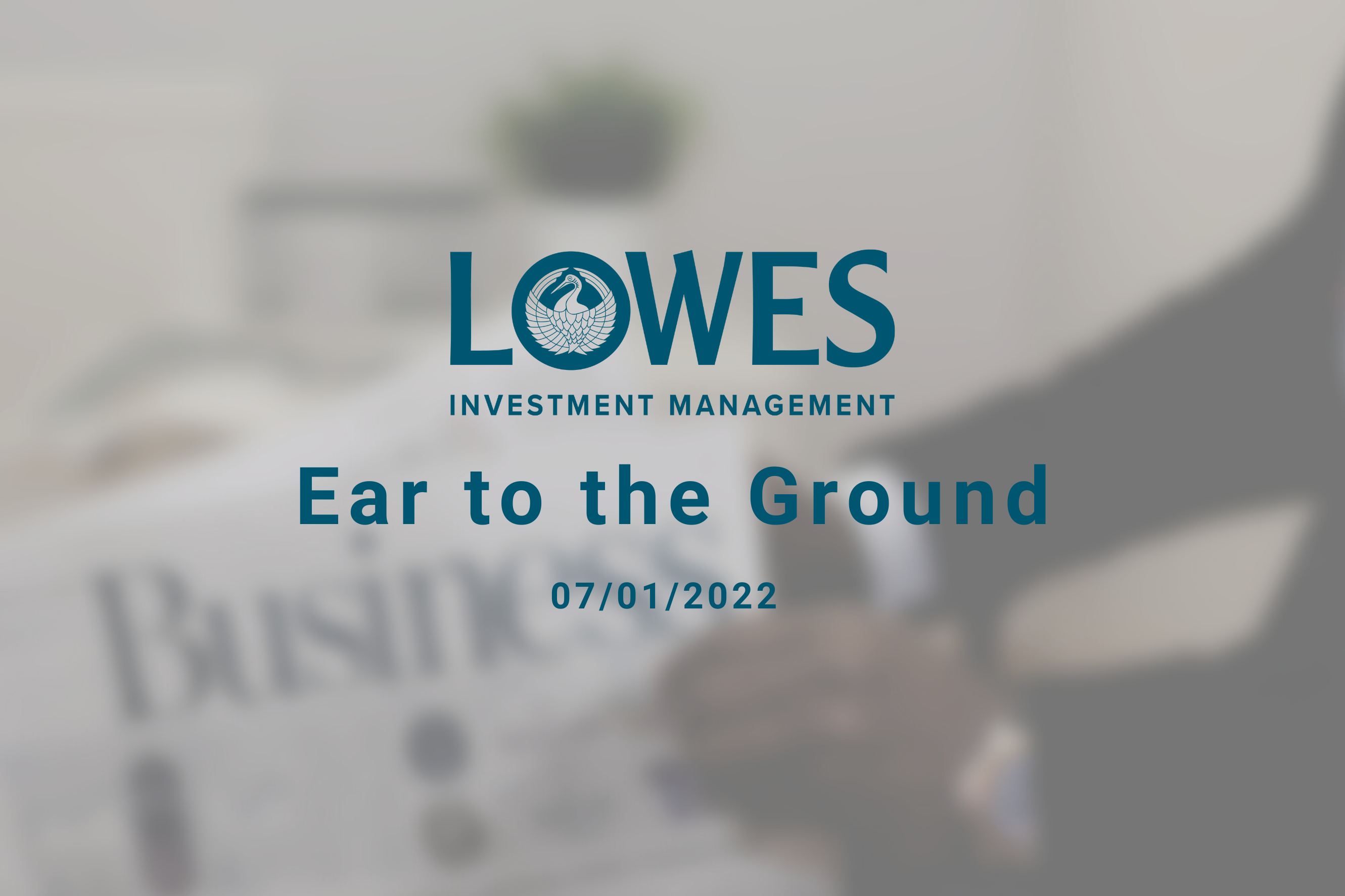Ear to the ground
07 Jan 2022

Taking centre stage this week was the release of the minutes from the latest US Federal Reserve meeting. These revealed that the policymakers were perhaps a little more hawkish than originally thought, the minutes noting that consideration was given to the possibility that interest rates might have to rise sooner or at a faster pace than previously anticipated due to the outlook for the economy, labour market and inflation. Some policymakers also commented that it may be appropriate to start reducing the size of the balance sheet soon after the rate hiking cycle begins. As a consequence the market is now pricing in a more aggressive move by the Fed in terms of rate increases. There is now calculated an 81.6% chance that we will see four rate hikes by them in 2022.
Whilst this is good news for the economy, certain asset and sub-asset classes responded negatively to the news. Government bond yields saw a sharp pick up, with the US 10 year Treasury now yielding north of 1.7% whilst the UK 10 year gilt now yields almost 1.2%. Whilst there still remains negative yields across some markets, most notably Europe, we are now starting to see a fall in the value of bonds globally which are negative yielding in nominal terms. Latest figures from Crescat and Bloomberg show that this figure now stands at $10.7trn, substantially lower than the peak of almost $18.5trn seen at the end of 2020. Good news perhaps for those investors seeking income, but not so much for those countries and corporates looking to raise capital through the bond markets.
Another area which struggled on the release of the minutes was technology stocks. The Nasdaq Composite index fell by almost 5.5% between the 3rd and 5th of January. Previously, weakness in the technology space had been predominantly seen in in lower cap stocks, but not this time, the Nasdaq 100 down by almost the same level. The technology has of course performed very well of a late for a number of reasons, such as strong earnings growth in the mega cap space and the forced adoption of technology at a quicker pace due to COVID. The financial outlook for these companies has also been helped by the low level of interest rates and therefore the rate at which future earnings are discounted. If rates are on the rise however, earnings growth will need to remain strong to potentially justify the valuations which these stocks currently trade on.
The days of COVID being a reason for high share prices, at least in some areas, appears to be now behind us. Take for example Peloton, the home exercise company. Before COVID struck the western world in a meaningful way the share price was languishing around the $20 mark. As the virus hit and our ability to go to the gym was removed the share price rocketed, trading in excess of $160 at the beginning of 2021. As the world tries to return to some sort of normality and the over excitement is removed, we have subsequently seen the share price retrace all the way back to just over $30. Now admittedly this is still a gain in excess of 50% from March 2020 levels, but certainly nowhere near where it was. Perhaps the Peloton share price is a good barometer for how people are feeling about life with COVID?
It’s not just Peloton however which has seen share price weakness. Research shows that nearly 40% of the stocks in the Nasdaq Composite index are trading down 50% or more from their 52 week high, despite the index overall continuing to trade near all-time highs. This perhaps shows the dominance of the mega cap stocks in terms of its overall direction. Whilst 40% is still some way off the figure seen in the early 2000’s, 2009 and March 2020, it is one to watch all the same. This would appear to now be the time to be using active managers in this area.
And as we move forward, sectors which historically perform best in a rising yield environment, such as financials, energy and industrials, could outperform. The valuation gap between value and growth remains substantial, by reference to forward PE ratios, but after many false dawns for value over the last few years, exposure to both is probably in order for now.
Finally, as we are at the start of the year, we thought we would reflect on 2022 year end forecasts for the S&P 500. These currently range from 5,330 (Oppenheimer) through to 4,400 (Morgan Stanley). These represent movements from the 2021 year end level of +11.83% and -7.68%. The average taken of 14 banks is 4,968 which would represent a move of +4.22%.
As always, there are some differences in opinion out there. Someone will be right; someone will be wrong. Or maybe, they may all be proved wrong. Isn’t it that what makes investing the interesting and dynamic animal that it is! Have a great 2022 everyone.
This article is for information purposes only and should not be construed as advice. We strongly suggest you seek independent financial advice prior to taking any course of action.
The value of this investment can fall as well as rise and investors may get back less than they originally invested.
Past performance is not necessarily a guide to future performance.
The Fund is suitable for investors who are seeking to achieve long term capital growth.
The tax treatment of investments depends on the individual circumstances of each client and may be subject to change in the future. The above is in relation to a UK domiciled investor only and would be different for those domiciled outside the UK. We strongly suggest you seek independent tax advice prior to taking any course of action.
Subscribe Today
To receive exclusive fund notifications straight into your inbox, please complete this form.